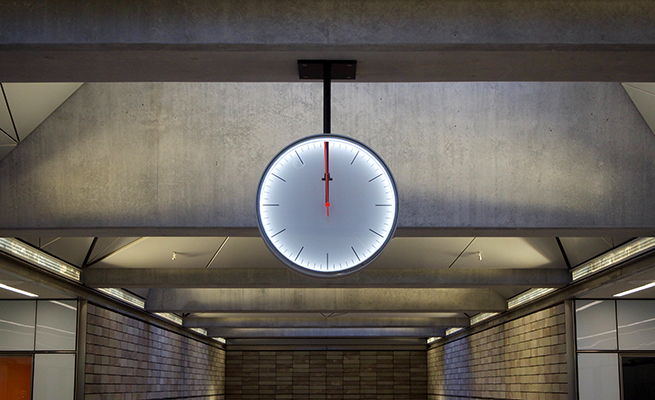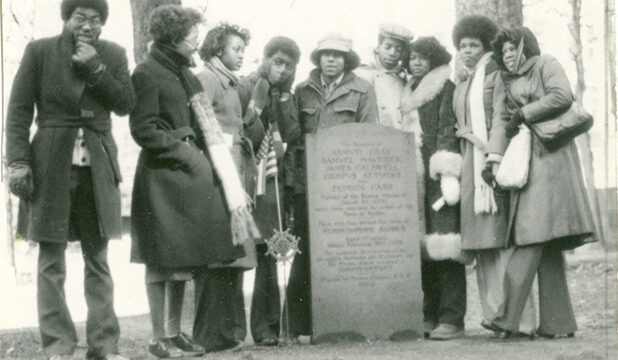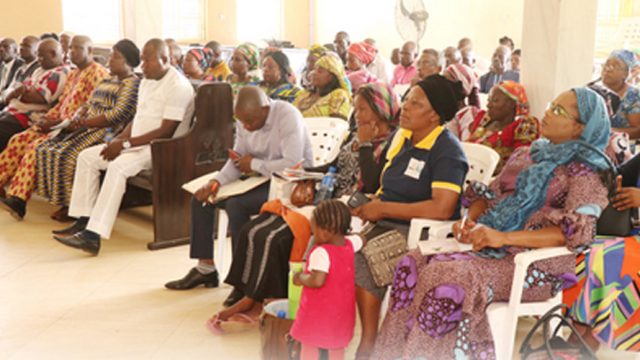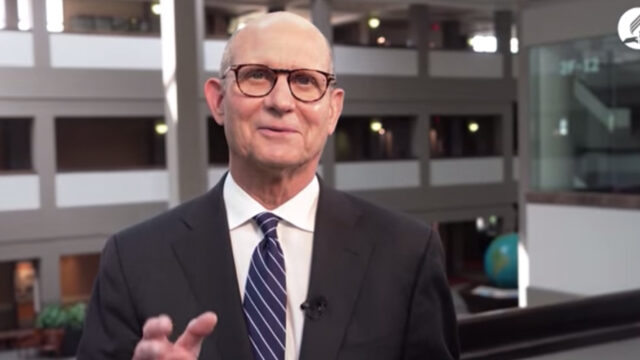Do recent events cause you to stop and think? They should.

One of the functions of the Adventist Review is to serve as a forum for our readership’s and church membership’s ideas. The following is one such article, an opinion with which you may want to engage.—Editors
On March 11, 2020, the World Health Organization officially characterized COVID-19 as a pandemic of epic proportions. The announcement swept many Christian believers into the same speculative panic that rules the secular mind. Reasonable concerns have turned into preoccupying worry that leaves many afraid, isolated, and confused.
The world says these are times of uncertainty, and Holy Scripture foretells of uncertain times before Christ returns. Our more than 160 years of fervent, meticulous, systematic, worldwide study of the biblical books of Daniel and Revelation, the Spirit of Prophecy, and our very name, “Adventist,” have shaped and centered our doctrines into preparation for the Second Coming.
Nevertheless, we have to admit that in modern times a few of our end-time doctrines have made some within our own body of faith very uncomfortable. They deem them as too conservative for modern taste, and have even shunned some of our church doctrines as too fanatical to put into practice.
COVID-19 is a wakeup call for some of these doubting Thomases. Some are now rethinking Adventist doctrinal positions as we see that prophecies are coming true and now recognize the value of the principles of the doctrines. Thus, COVID-19 may not just be a sign of the times, but a sign to our own body of faith.
Cities
Take, for example, Ellen G. White’s warning of more than 100 years ago to move out of the city in the last days. She wrote that “the cities will be filled with confusion, violence and crime, and that these things will increase till the end of this earth’s history.”1 And again, “When God’s restraining hand is removed, the destroyer begins his work. Then in our cities the greatest calamities will come.”2 Furthermore, she emphasized that no city will escape the turmoil: “The end is near and every city is to be turned upside down every way.”3
Today, with the cities and metropolitan areas across the nation largely the epicenters of the aggressive virus as the carriers remain largely unknown, many now see the wisdom of prophecy and recommitting their lives to its truths. Unfortunately, the last-minute heed to doctrine has left some scrambling, seeking to purchase property while under the challenge of the stay-at-home orders. Perhaps they are just now catching up with some of the unchurched who have long sensed impending calamities, bought mountain hideaways, and now wait there for the coronavirus pandemic to subside in the cities.4
Still, once the virus is contained and the quarantines lifted, before we all start packing our bags and calling for the moving truck, we may well consider other counsel from the Spirit of Prophecy on the impracticality of all believers abandoning city residence: “Many will have to labor earnestly to help open the way. But until it is possible for them to leave, so long as they remain, they should be most active in doing missionary work, however limited their sphere of influence may be.”5
It seems that the urgency we should feel as the death toll mounts globally from the virus is less about moving out of some city and more about helping others to be ready for Christ’s return. We must redirect social energy from anxiety and panic to God’s call for inward preparedness when we see signs and wonders. The natural outgrowth of our inward preparedness will be the outward expression of helping others and witnessing.
Disaster Preparedness
Note, though, that we will never be able to focus on witnessing if there’s no outward preparedness for disasters prior to the “signs and wonders.” Biblical principles on, and examples of, sound disaster preparedness and response have surfaced during the pandemic. Adventists have learned crisis anticipation from Noah and Joseph. Our formalized belief in disaster preparedness and response demonstrates itself in two great Adventist organizations, the international Adventist Development and Relief Agency (ADRA) and, stateside, Adventist Community Services. We also promote the benefits of growing our own fruits and vegetables, preserving foods and storing goods, and self-reliance from the world for some necessities. Perhaps we have strayed away from thorough faithfulness to these principles in our own lives and are now focused too heavily on disaster response to the neglect of personal preparedness.
Consequently, some unbelievers were more prepared than many Adventists for some of the challenges of COVID-19.
Sensing a climax, many of the unchurched have been building doomsday bunkers to save themselves.6 An interview in 2017 indicated that more than half of Silicon Valley’s billionaires purchased apocalypse insurance such as a safe room, bunker, or overseas hideaway. Companies around the world say there’s a growing demand to build these fortified structures, which are equipped with power systems, water purification systems, blast valves, and nuclear biological chemical air filtration, and include food supplies for a year or more, with hydroponic gardens to supplement the rations.7
While the rich are purchasing doomsday bunkers starting at $4.5 million, in Middle America the “preppers community” is said to be making “active preparations to survive the fall of human civilization.”8 The nationwide “preppers” assemble more than just an emergency kit; rather, they engage in the extreme disaster preparedness of stockpiling goods, and even weapons, to last for years; digging underground tunnels and renovating homes for storage, while also developing the capability to be self-reliant from public utilities. A 2017 survey found that about 55 percent of American adults are prepping for “the day most of the world’s population is wiped off the map.”9 Of that group, about 35 percent said they didn’t need to hit the stores because their homes already include survival items at the ready for an emergency.

The survey also shows the investments in home renovations, escape vehicles, and other survival items to prepare for “an apocalyptic doomsday” disaster.

The survey findings beg the question: What percentage of Adventists is prepared for the impact of pestilences, plague, and famines? We know Scripture tells us of impending perilous times of disasters in the last days.10 Yet, far too many of us are unprepared for disasters.
Our disaster preparedness, however, isn’t about having emergency kits, such as the preppers have, to save ourselves. We engage in disaster preparedness so that when pestilences, famine, and other catastrophes strike, instead of panic and bewilderment, we’re already prepared with material necessities. We can therefore focus on seizing the opportunity to sound the midnight cry of the power of Jesus’ promise of His soon return! That’s the advantage of disaster preparedness for us!
Midnight Cry—Sound the Alarm
Earlier this year (2020), a global midnight cry was sounded, and it wasn’t by Adventists. Have you heard of the Doomsday Clock? This clock, established in 1947, is a global indicator of the “putative doomsday annihilation” represented by the 12 a.m. hour as the end of the world. In late January 2020, the clock’s founding atomic scientists and its 13 Nobel Laureate board members moved the Doomsday Clock from two minutes to midnight to 100 seconds to midnight, with the cry of global catastrophe and to signal the end may be near.11
Where Is our Adventist Midnight Cry?
Our denomination was founded upon fundamental principles of valiant proclamations that sound the alarm to prepare for the Second Coming. Once known for our steadfast fervor, urgent public appeals, and bold witness, some of us are becoming lackluster.
The COVID-19 pandemic is raising questions, and we need to boldly and vigorously share the answers found in the Bible. Many people are confused about how the world will end, as evidenced in a U.S. survey taken before the pandemic hit. Most Americans said nuclear war would be the most likely cause of the earth’s destruction. Even more alarming, one fifth of Americans said that the world won’t likely end at all.

Biblical teaching is needed now, more than ever. This is the time for the old-fashioned style of witnessing as our pioneers used—one that is daring, unashamed, and sincere in its strong proclamation. It’s the type of witness that has made some of us uncomfortable, but the signs warn us that it’s time for Adventists to courageously sound the midnight cry!
Revelation Seminars
Adventist teachings on the state of the dead and the books of Daniel and Revelation are part of the many contributions our church has made to Christendom. In days gone by, we carried these distinctive end-time messages worldwide in Revelation Seminar tent meetings held by our local churches. Perhaps because of the antiquated methods of tent meetings, we’ve largely shelved the consistent offerings of these seminars. But these once-popular, worldwide, summertime Revelation Seminars are worth dusting off.
We can use modern tools such as social media to spread the same messages of the Revelation Seminar tent meetings, which led a vast number of people to accept Bible truths and join the church. Today, we have the advantage of the speed of communications and travel and more religious freedoms than at any other time in earth’s history. So, these can be effective methods of witness.
Final Call
As the coronavirus death toll rises worldwide, health officials frantically try to contain the virus, the United Nations warns of imminent famine, international organizations established to maintain peace and unity are undermined, and key world leaders rise and fall.
At this time of earth’s history, our energies can’t be focused entirely on stockpiling toilet paper and hand sanitizer.
For far too long, far too many have shunned far too much of the end-time doctrines. It’s time to dust off old doctrines and embrace antiquated truths.
Don’t miss the call of the COVID-19 signs!
1 Ellen G. White, Testimonies for the Church (Mountain View, Calif.: Pacific Press Pub. Assn., 1902), vol. 7, p. 84.
2 Ellen G. White, Last Day Events (Boise, Id.: Pacific Press Pub. Assn., 1992), p. 111.
3 Ibid.
4 See “Inside the Survivalist Bunker Where Some Wealthy People Hope to Ride Out Coronavirus,” March 13, 2020, https://www.vanityfair.com/style/2020/03/coronavirus-survivalist-bunker. See also, San Francisco Chronicles, April 3, 2020, “Billionaire Bunkers: Where the elite may ride out the coronavirus pandemic, https://www.sfchronicle.com/business/article/Billionaire-bunkers-Where-the-elite-may-ride-out-15156717.php.
5 Ellen G. White, Selected Messages (Washington, D.C.: Review and Herald Pub. Assn., 1958), book 2, p. 360.
6 See “Here’s a look inside a 15-story underground doomsday shelter for the 1% that has luxury homes,” https://www.businessinsider.com/photos-of-survival-condo-project-luxury-doomsday-shelter-2017-4. See also, “Billionaire bunkers: How the 1% are preparing for the apocalypse,” August 2019, https://www.cnn.com/style/article/doomsday-luxury-bunkers/index.html.
7See “Inside the Survivalist Bunker Where Some Wealthy People Hope to Ride Out Coronavirus,” March 13, 2020,https://www.vanityfair.com/style/2020/03/coronavirus-survivalist-bunker.
8 See, “Preparing for the End of the World, on a Budget,” February, 10, 2020, https://www.npr.org/2020/02/10/803011944/preparing-for-the-end-of-the-world-on-a-budget. See also, “National Geographic Channel’s Doomsday Preppers,” https://www.nationalgeographic.com.au/tv/doomsday-preppers/. See also, “What Preppers can teach us about dealing with the Coronavirus outbreak,” March 13, 2020, https://time.com/5797950/coronavirus-preppers/.
9 See “Doomsday Preppers Statistics: Some 20% of Americans say they’re
preparing for the end times,” https://www.finder.com/doomsday-prepper-statistics.
10 See Luke 21 and Matthew 24.
11 See, “The End May Be Nearer: Doomsday Clock Moves Within 100 Seconds of Midnight,” January 2020, https://www.npr.org/2020/01/23/799047659/the-end-may-be-nearer-doomsday-clock-moves-within-100-seconds-of-midnight. See also, “Closer Than Ever: It’s 100 Seconds to Midnight,” January 2020, https://thebulletin.org/doomsday-clock/.








